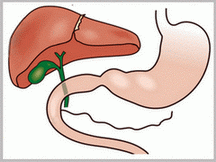
Gallbladder symptoms
Table of Contents
About me
Categories
Text
The gallbladder is a reservoir for bile located on the undersurface of the liver at the confluence of the right and left halves of the liver. The gallbladder may be deeply imbedded into the liver or occasionally presents on a mesenteric attachment, but usually lays in a gallbladder fossa. The gallbladder varies in size and consists of a fundus, a body, and an infundibulum. The tip of the fundus usually reaches the free edge of the liver. The infundibulum of the gallbladder makes an angle with the body and may obscure the common hepatic duct. The cystic duct arises from the infundibulum of the gallbladder and extends to join the common hepatic duct. The lumen measures between 1 and 3 mm in diameter, and its length varies depending on the type of union with the common hepatic duct.
The bile ducts, gallbladder, and sphincter of Oddi act in concert to modify, store, and regulate the flow of bile. Approximately 600 to 750 mL of bile is produced daily. During its passage through the bile ductules, canalicular bile is modified by the absorption and secretion of electrolytes and water. The gastrointestinal hormone, secretin, increases bile flow primarily by increasing the active secretion of chloride-rich fluid by the bile ducts. Bile ductular secretion is also stimulated by other hormones such as cholecystokinin and gastrin. The bile duct epithelium is also capable of water and electrolyte absorption, which may be of primary importance in the storage of bile during fasting in patients who have previously undergone cholecystectomy. The main functions of the gallbladder are to concentrate and store hepatic bile during the fasting state and deliver bile into the duodenum in response to a meal. The usual capacity of the human gallbladder is approximately 40 to 50 mL. Only a small fraction of the 600 to 750 mL of bile produced each day would be stored were it not for its remarkable absorptive capacity. The gallbladder mucosa has the greatest absorptive capacity per unit of any structure in the body.
Labels: gallbladder
0 Comments:
